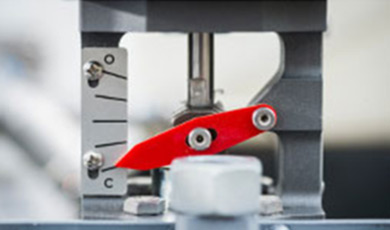Nov . 21, 2024 17:38 Back to list
rebuild a hydraulic cylinder product
Rebuilding a Hydraulic Cylinder A Step-by-Step Guide
Hydraulic cylinders play a crucial role in various machinery and equipment, converting fluid power into mechanical energy. Over time, these cylinders can experience wear and tear, leading to leaks and decreased efficiency. Rebuilding a hydraulic cylinder is a cost-effective alternative to purchasing a new one, allowing you to restore its functionality and extend its lifespan. This article provides a comprehensive guide on how to rebuild a hydraulic cylinder effectively.
Understanding the Components
Before diving into the rebuilding process, it’s essential to familiarize yourself with the basic components of a hydraulic cylinder. A typical hydraulic cylinder consists of a barrel, piston, piston rod, seals, and end caps. Each component plays a significant role in the overall operation of the cylinder. Identifying the problematic components during disassembly will make the rebuilding process smoother and more efficient.
Tools and Materials Needed
To rebuild a hydraulic cylinder, ensure you have the following tools and materials ready
- Wrenches and sockets - Torque wrench - Hydraulic fluid - Cleaning supplies (degreaser, scrubbing brushes) - Replacement seals and O-rings - A bench vice or suitable mounting system - Safety goggles and gloves
Step-by-Step Rebuilding Process
1. Disassembly Start by safely removing the hydraulic cylinder from its equipment. Ensure the system is depressurized, and wear safety gear to protect against hydraulic fluid. Carefully unscrew and remove the end caps and take out the piston and piston rod. Keep track of the order of components for easier reassembly.
rebuild a hydraulic cylinder product

2. Inspection Thoroughly inspect all components for wear or damage. Look for signs of scoring on the barrel, wear on the piston, or any damaged seals. Replace any parts that are not in good condition. This inspection phase is vital to ensure that you do not reinstall damaged components that may lead to future failures.
3. Cleaning Clean all parts with a degreaser to remove any old hydraulic fluid, dirt, and debris. Use a scrub brush or cloth to ensure a smooth surface for the new seals. Pay special attention to the grooves where the seals will sit, as any dirt can cause leaks.
4. Seals Replacement Remove the old seals and O-rings from the piston and the barrel. Install the new seals carefully, ensuring they are seated correctly in their respective grooves. A little hydraulic fluid on the seals can help with installation and provide a better seal during operation.
5. Reassembly Begin reassembling the hydraulic cylinder by inserting the piston and piston rod back into the barrel. Secure the end caps tightly using a torque wrench to ensure they are sealed properly. Follow the manufacturer's torque specifications to avoid over-tightening, which could damage the components.
6. Testing Once reassembled, the hydraulic cylinder must undergo testing. Connect it to a hydraulic system and monitor for any leaks. Check the operation by moving the piston through its full range to ensure smooth movement and proper function.
7. Final Adjustments If everything checks out, the hydraulic cylinder is ready for use. If there are any issues, revisit the assembly process to identify and rectify any mistakes.
Conclusion
Rebuilding a hydraulic cylinder is a practical and rewarding task that can save time and money while enhancing the efficiency of your machinery. By following these steps and ensuring proper maintenance, you can ensure that your hydraulic system remains in optimal working condition for years to come. Always prioritize safety throughout the process, and don’t hesitate to seek professional assistance if needed.
-
Fork Lift Power Units - Hebei Shenghan | Efficiency, Reliability
NewsJul.13,2025
-
1.5-Ton Turbocharged Cylinder-Hebei Shenghan|Hydraulic Solution,Energy Efficiency
NewsJul.13,2025
-
Auto Hoist Power Units-Hebei Shenghan|Efficiency&Industrial Lifting
NewsJul.13,2025
-
Double Acting Power Units-Hebei Shenghan|Hydraulic Solutions,Industrial Efficiency
NewsJul.13,2025
-
1.5 Ton Lifting Cylinder 70/82-40-290-535 - High-Performance Hydraulic Solution | Hebei Shenghan
NewsJul.13,2025
-
Fork Lift Power Units - Hebei Shenghan | Efficiency&Reliability
NewsJul.13,2025
